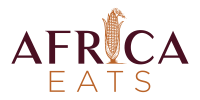Top Exports from Cameroon: A Guide
Understanding Cameroon’s export landscape is key for global traders and economists. This Central African nation boasts a diverse range of exports, shaping its economic dynamics.
From crude oil to cocoa beans, Cameroon’s export sector is a vibrant mix. It’s a significant player in the global market, with its products reaching far and wide.
In this guide, we delve into Cameroon’s top exports, providing insights into the country’s export data, main products, and key partners. Let’s explore the world of Cameroon’s exports.
Cameroon’s Economic Landscape and Export Significance
Cameroon’s economy is heavily reliant on its export sector. Agriculture, in particular, plays a significant role, contributing substantially to the country’s GDP.
Crude oil, however, is one of the main exports. It’s a major revenue source, underpinning the country’s economic stability.
The export sector’s significance extends beyond revenue. It influences Cameroon’s trade policies, shapes its international relations, and impacts the livelihoods of its citizens.
Key Export Commodities of Cameroon
Cameroon’s export portfolio is diverse. It ranges from crude oil and petroleum products to agricultural commodities and timber.
- Crude oil and petroleum products
- Agricultural products: Cocoa, coffee, bananas
- Timber and wood products
These key products form the backbone of Cameroon’s export economy.
Crude Oil and Petroleum Products
Crude oil is a major export commodity. It contributes significantly to Cameroon’s GDP.
The country also exports refined petroleum products. These include gasoline, diesel, and jet fuel.
Agricultural Products: Cocoa, Coffee, and Bananas
Cameroon is a leading global producer of cocoa beans. These are a key export product.
Coffee, both Arabica and Robusta varieties, is another important agricultural export. Bananas and other fruits are also exported, mainly to European markets.
Timber and Wood Products
Cameroon’s vast forests provide timber and wood products for export. These commodities are a major source of foreign exchange for the country.
The timber industry also supports local employment. It contributes to rural development and poverty reduction.
Cameroon’s Main Export Partners
Cameroon’s export market is global. Its main trading partners are spread across different continents.
- China
- European Union
- Other African countries
These partners import a variety of goods from Cameroon. They play a crucial role in the country’s export economy.
Challenges and Opportunities in Cameroon’s Export Sector
Cameroon’s export sector faces several challenges. Infrastructure deficits and fluctuating commodity prices are among the main issues.
However, there are also opportunities. The government is encouraging export diversification. This could lead to a more balanced and resilient economy.
Investment in agricultural technology and processing facilities is seen as a way to boost export potential. This could open up new markets and increase revenues.
The Future of Cameroon Exports
The future of Cameroon’s exports looks promising. The development of the Kribi Deep Seaport is expected to enhance export capabilities.
Moreover, growth in the technology and services sectors could open new export areas. This diversification could strengthen Cameroon’s economy.
Conclusion
Cameroon’s export sector is a vital part of its economy. With diverse commodities and potential for growth, it holds a promising future.
Understanding Cameroon’s main exports can provide valuable insights for traders and investors. It’s a key to unlocking opportunities in this Central African nation.




















































